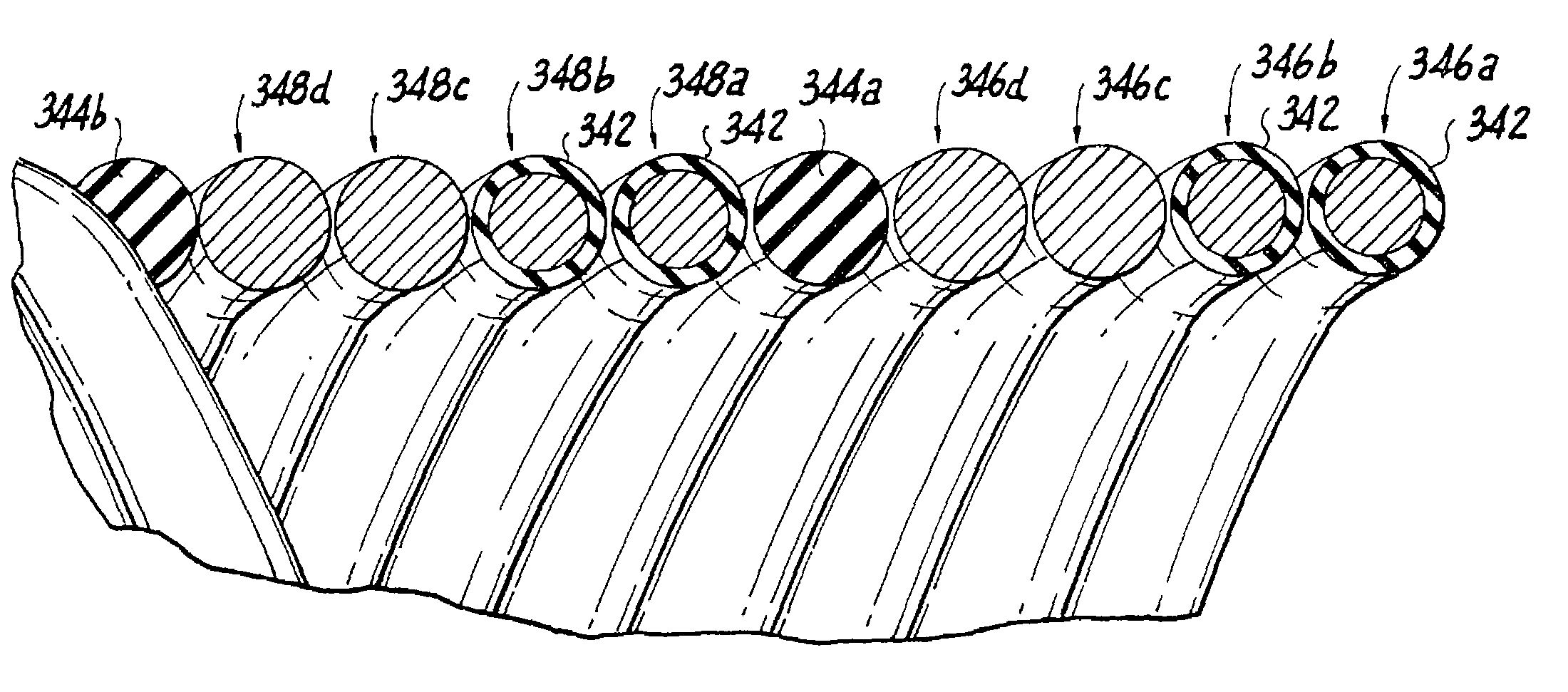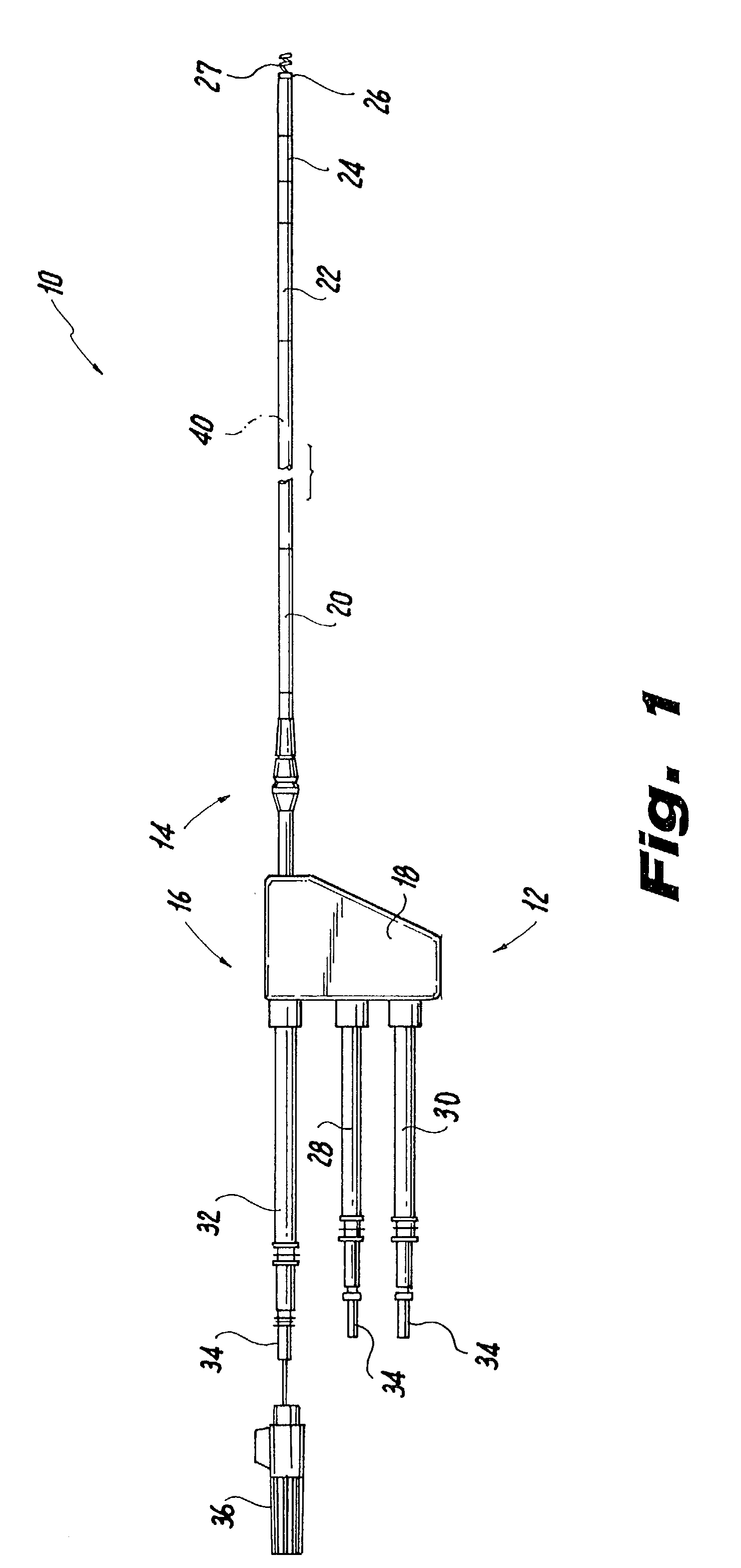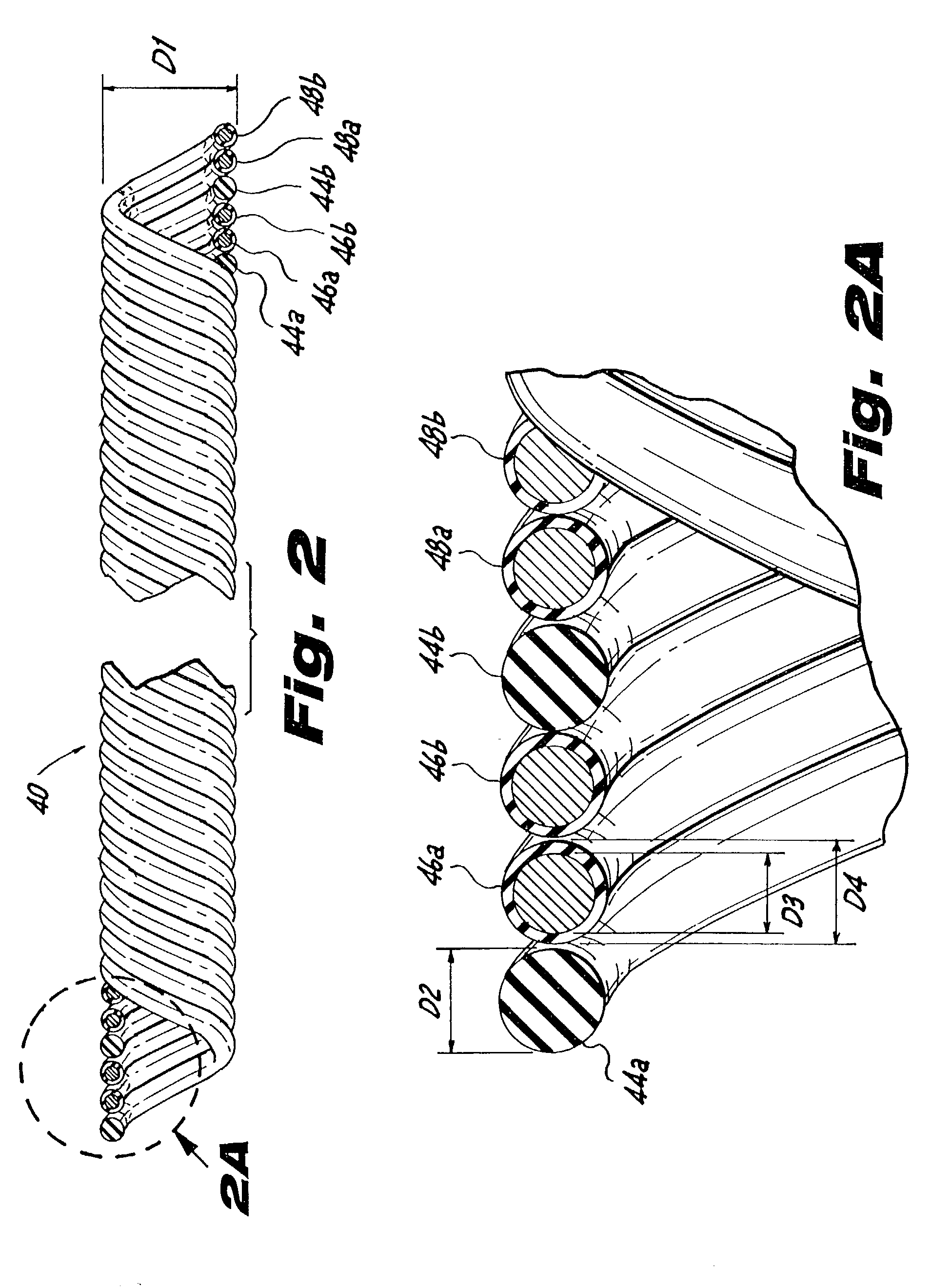Multifilar conductor for cardiac leads
a multi-filar conductor and lead body technology, applied in the direction of coupling device details, coupling device connection, therapy, etc., can solve the problems of compromising electrical communication between vital components, affecting and affecting the normal combination of defibrillation and pacing functions, so as to enhance the separation integrity of electrical communication and minimize the electrical impedance and the risk of lead body expansion.
- Summary
- Abstract
- Description
- Claims
- Application Information
AI Technical Summary
Benefits of technology
Problems solved by technology
Method used
Image
Examples
Embodiment Construction
[0038]In the description which follows the term “proximal” refers to the end of the endocardial lead which is farthest from the surgical site, while the term “distal” refers to the end of the lead which is intended to be closest to the heart. In addition, in the following detailed description of the disclosure, like reference numerals shall be used to identify similar structural elements of the invention disclosed herein.
[0039]Referring now to FIG. 1, an endocardial lead fabricated in accordance with the present disclosure is indicated generally by the reference numeral 10. Lead 10 includes an elongated support body or lumen 12 having a distal end portion 14 and a proximal end portion 16. Distal end portion 14 may be straight or have a pre-formed shape, such as a J-shape. Body 12 may include various joints, spacers, extensions and adapters to increase its operational length.
[0040]The distal end portion 14 of lead body 12 houses various electrical components used for defibrillation, ...
PUM
 Login to View More
Login to View More Abstract
Description
Claims
Application Information
 Login to View More
Login to View More - R&D
- Intellectual Property
- Life Sciences
- Materials
- Tech Scout
- Unparalleled Data Quality
- Higher Quality Content
- 60% Fewer Hallucinations
Browse by: Latest US Patents, China's latest patents, Technical Efficacy Thesaurus, Application Domain, Technology Topic, Popular Technical Reports.
© 2025 PatSnap. All rights reserved.Legal|Privacy policy|Modern Slavery Act Transparency Statement|Sitemap|About US| Contact US: help@patsnap.com



